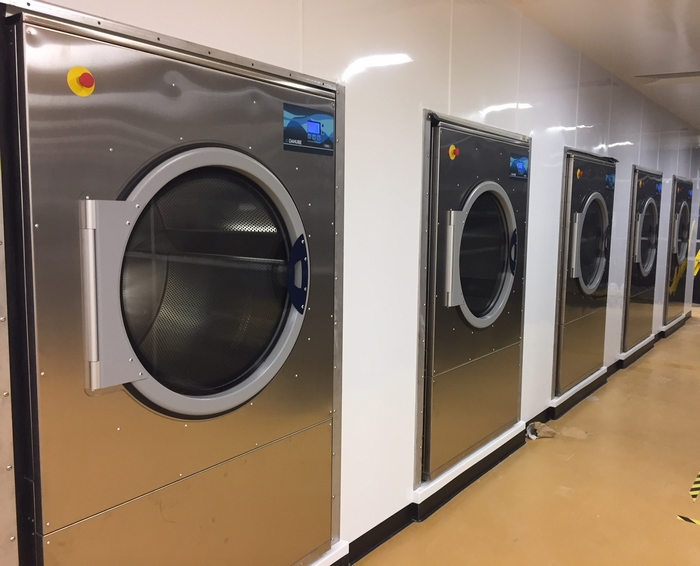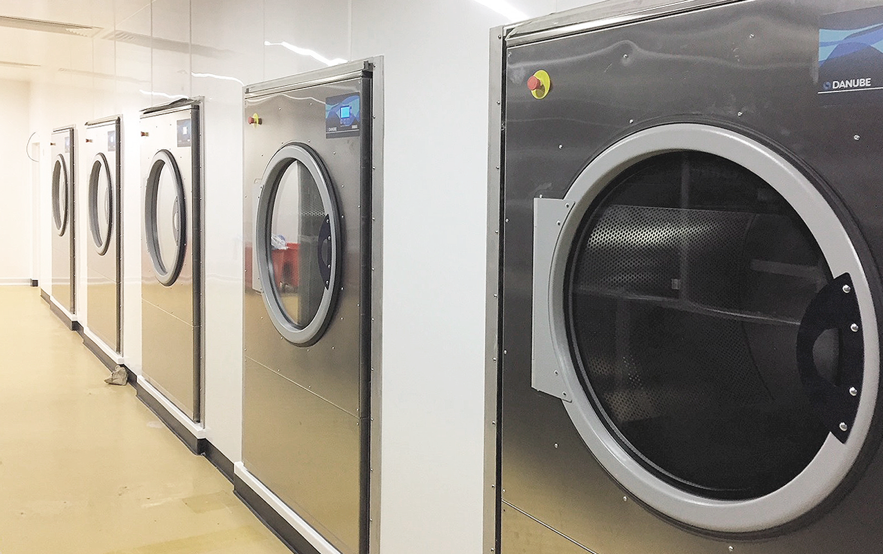Features of Cleanroom Laundry Service

A cleanroom is an environment typically used in manufacturing or scientific research with a low level of environmental pollutants such as dust, airborne microbes, aerosol particles and chemical vapours. More accurately, a clean room has a controlled level of contamination that is specified by the number of particles per cubic meter at a specified particle size. Clean rooms are used extensively in industries such as semiconductor manufacturing, biotechnology, life sciences, pharmaceutical manufacturing and manipulation, nuclear energy plants, food & beverage manufacturers or operating rooms in health care centres, to name a few.
With sizes and natures ranging from a single tiny space to entire factories spread across different floors, clean rooms can take up to thousands of square meters, current technology making it possible to differ from the classical idea of a clean room being restrained to tightly locked, small spaces.
Speaking in general terms, three elements are structural for the achievement of a well-functioning and well-maintained cleanroom laundry service: air, persons working in them, and the elements it is equipped with.
AIR
The ambient outdoor air in a typical environment contains 3,5·109 particles per cubic meter within the size range 0.5 µm and larger in diameter – which corresponds to an ISO 9 clean room. An ISO 1 clean room, on the other hand, allows no particles within that size range, admitting only 12 particles per cubic meter sized 0.3 µm and smaller.
Needless to say, outside air is filtered before entering a clean room, excluding dust and other pollutants. Inside air is, furthermore, constantly recirculated through high efficiency particulate air (HEPA) and/or ultra-low penetration air (ULPA) filters, aiming to remove internally generated pollution.
Positive pressure can be used in clean rooms as a form of preventing any outside unfiltered air coming in in case of a leak. The pressure differential causes inside air to escape were any breaches to occur, ensuring the conservation of conditions previous to the issue. HVAC systems, too, are usually implemented to keep humidity levels under certain thresholds, since overcharging of equipment can lead to electrostatic discharge issues.
Contrary to common belief, clean rooms are not sterile environments: only airborne particles are controlled. Particle levels are usually tested using a particle counter, and detection of microorganisms is carried out and counted using environmental monitoring methods.
HUMAN FACTOR
Leaving breaches and unplanned leaks aside, people coming in and out of a clean room are usually the main source of potential contamination of controlled environments. Whether by substances attached to workers’ clothes or by microbes carried by the very individuals, relevant procedure rules must always be followed in order to successfully offer a cleanroom laundry service.
Low-level clean rooms may only require special shoes with completely smooth soles that do not track in dust or dirt. However, for safety reasons, access to clean rooms is usually restricted to those wearing a cleanroom suit, which classically consists of an overall covering the entire body, face masks, hoods, gloves, and shoe covers.
Just like in highly pressurized or underwater environments, staff must always enter through a transition room, usually called airlock. In clean rooms where standards of air contamination are the most rigorous, the entrance may even contain an air shower.
EQUIPMENT
All equipment inside the clean room is designed to generate minimal air contamination. From clean room furniture, designed for its use to produce a minimum level of
residual particles and easy to clean, to special mops and buckets used for cleaning purposes of the very room, every object that comes or stays in the controlled environment must be thought out to cause the least impact on the room’s conditions.
For that matter, materials commonly used in daily life such as paper, pencils and fabrics made from natural fibres, which usually leave a trace of their very components when used, are strictly excluded from entering such environments, forcing plant managers to search equivalent, less polluting options.
